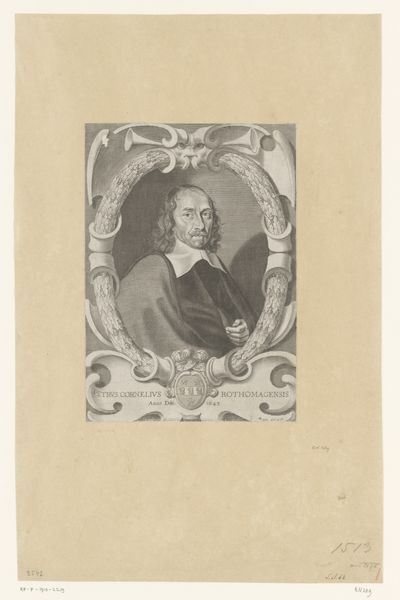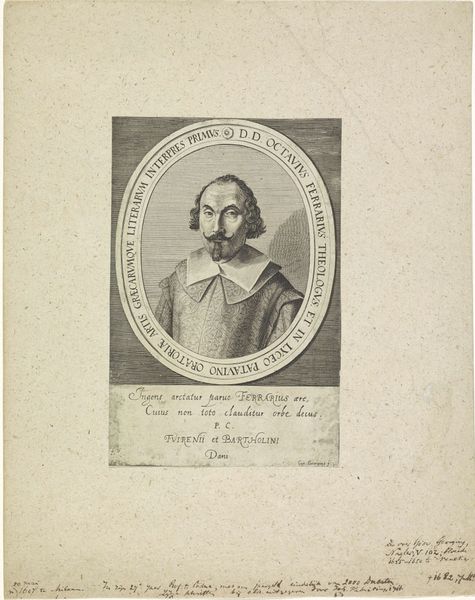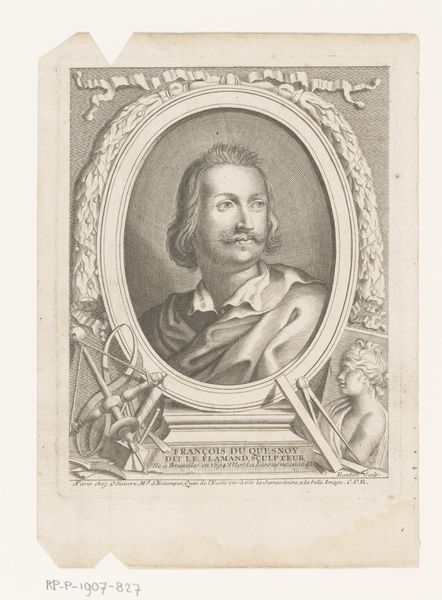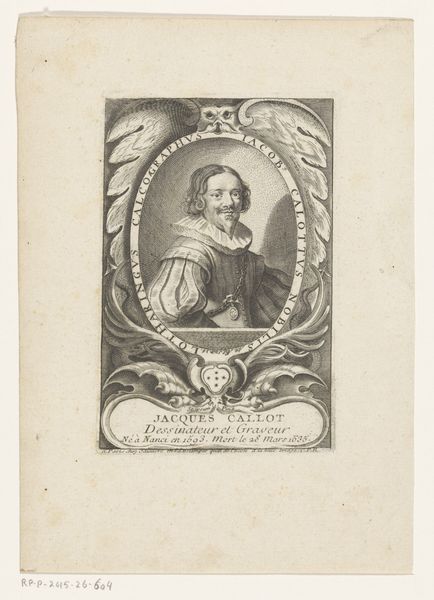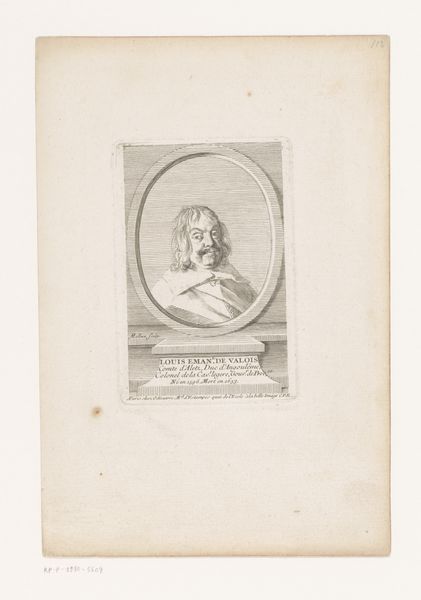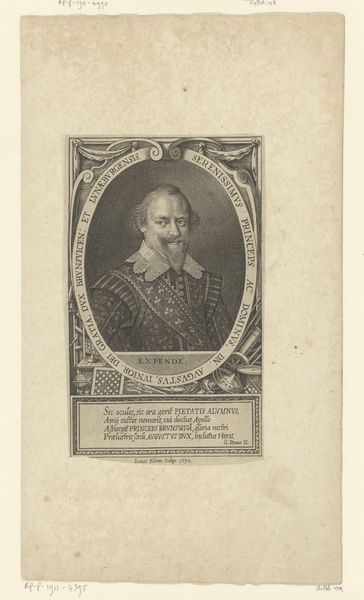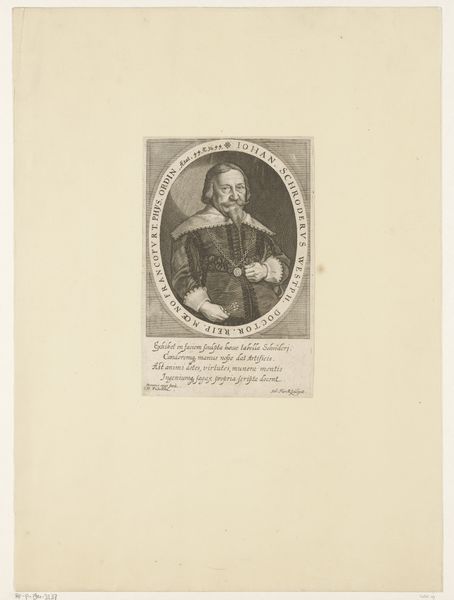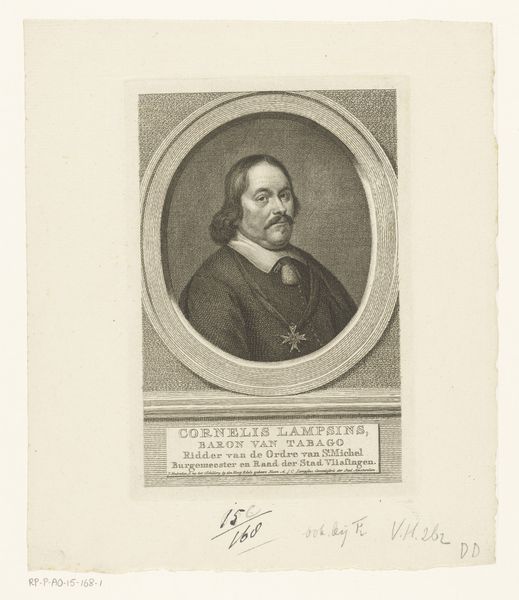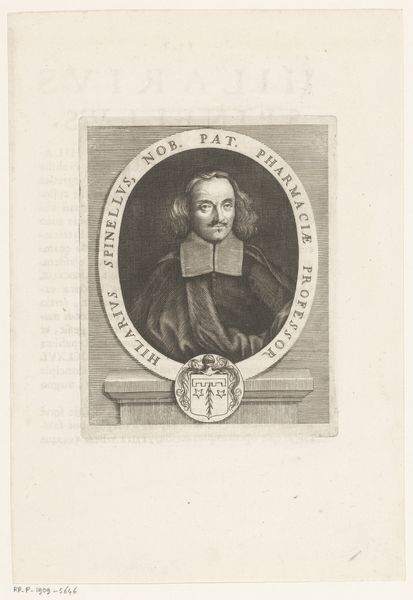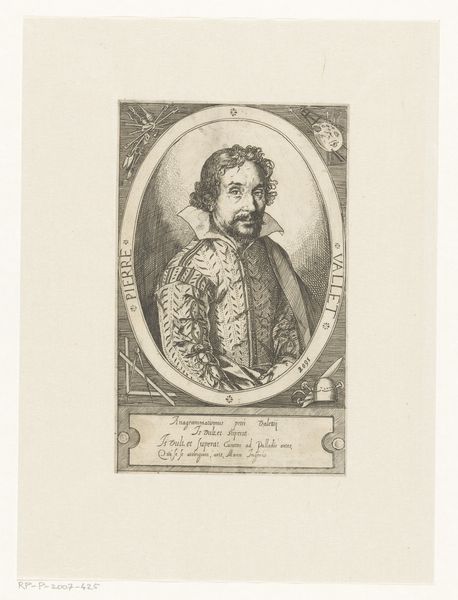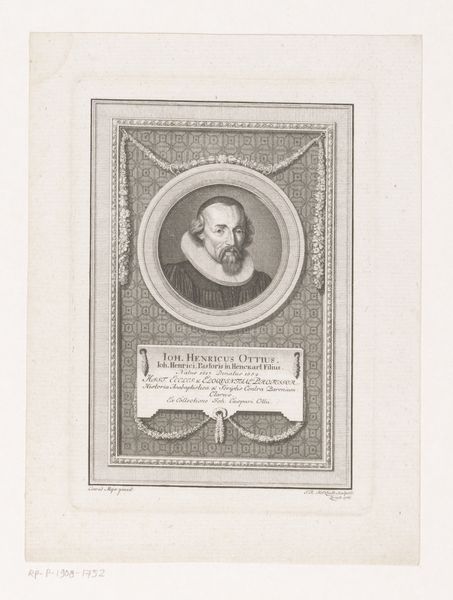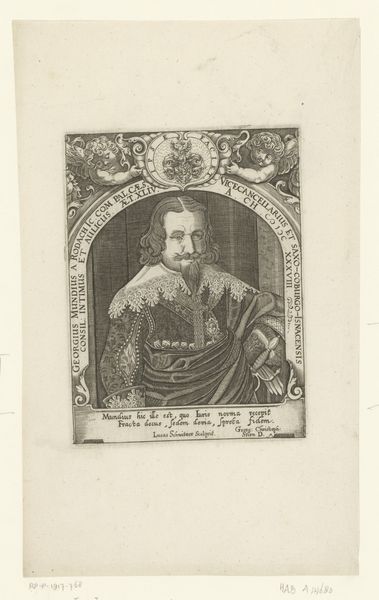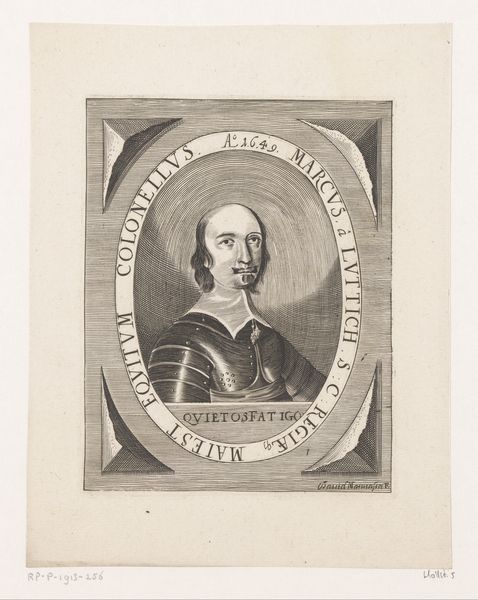
engraving
#
portrait
#
baroque
#
old engraving style
#
history-painting
#
engraving
Dimensions: height 171 mm, width 129 mm
Copyright: Rijks Museum: Open Domain
Editor: This is a portrait of Jules Mazarin, engraved by Jean Lenfant around 1659. The style feels quite formal and Baroque, like many portraits from the time. What do you see in this piece beyond its straightforward depiction of a historical figure? Curator: I see more than just a formal portrait; I see a carefully constructed image meant to solidify power. Mazarin, as chief minister to Louis XIV, was instrumental in shaping French politics. Consider the inscription. It praises how Mazarin "sustained the storm". This carefully crafted engraving becomes an active participant in bolstering his political standing during a tumultuous time. What is communicated through portraiture and political maneuvering here? Editor: So, the image isn’t neutral; it's propaganda, almost? The text positions him as a savior during political upheaval. I hadn't considered the writing itself to be a purposeful declaration. Curator: Precisely! And let's think about how portraits like this circulated. Engravings made his image accessible and repeatable. Consider its accessibility. Think about the power dynamics at play here – who controlled the means of representation and how that reinforced existing social structures. Editor: That's a good point about accessibility and repetition. Because it’s an engraving, that implies wider distribution than, say, an oil painting would have had at the time. Did Lenfant work for Mazarin directly or were there other parties involved in creating this image and shaping its message? Curator: Understanding Lenfant’s role and patronage is crucial. Was he commissioned? Was this independent work? Considering these elements sheds light on the image's intent and reach. We can see it as a negotiation between artist, patron, and audience – a conversation across centuries about power, image, and representation. Editor: This conversation really has helped me think about art history more dynamically. Looking at an engraving this way – thinking about its political context and the intentions behind its creation – has really changed how I see the piece. Curator: Excellent! Recognizing the intersection of art and politics allows us to unpack these images and better understand how art operates within culture.
Comments
No comments
Be the first to comment and join the conversation on the ultimate creative platform.
